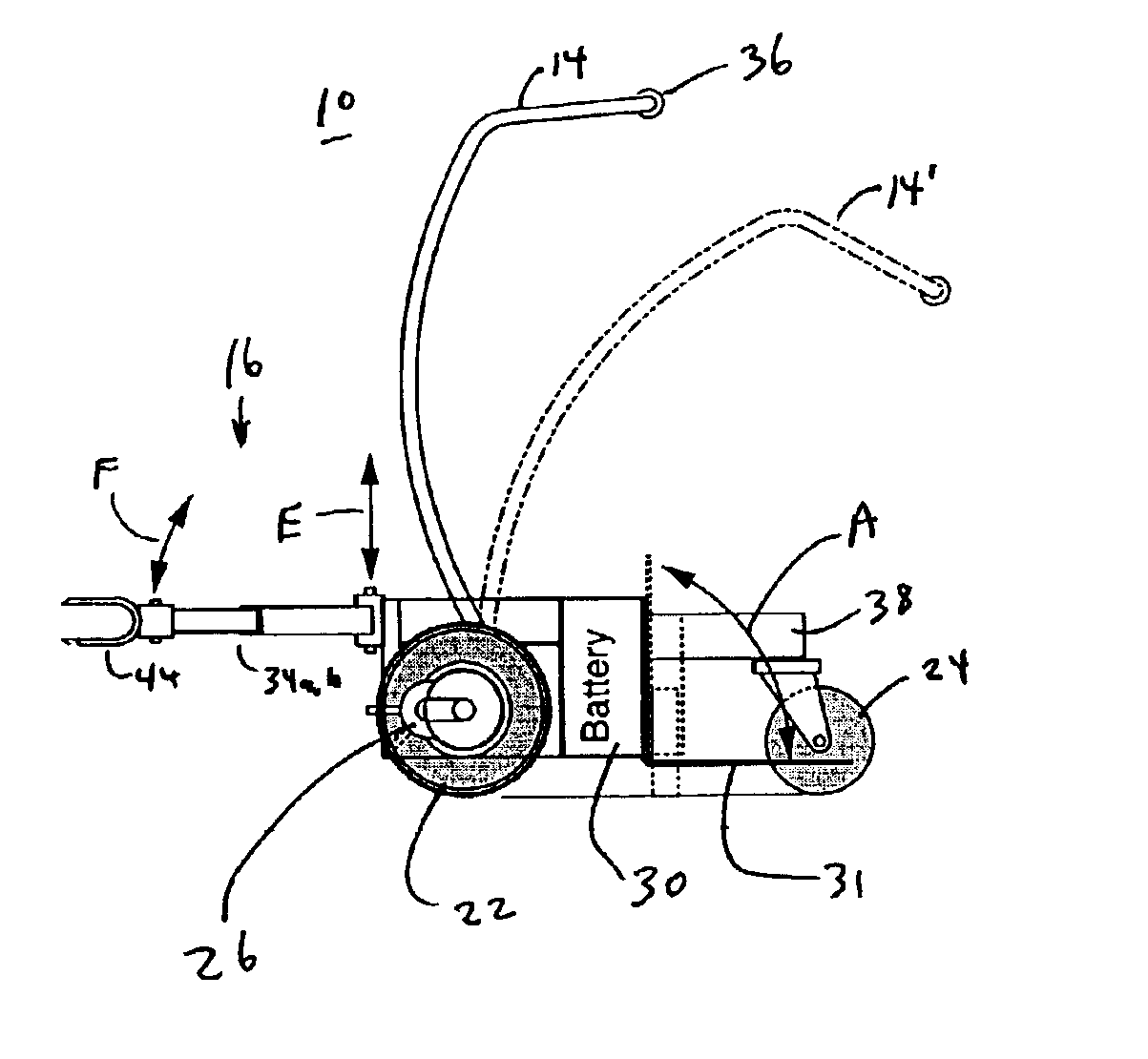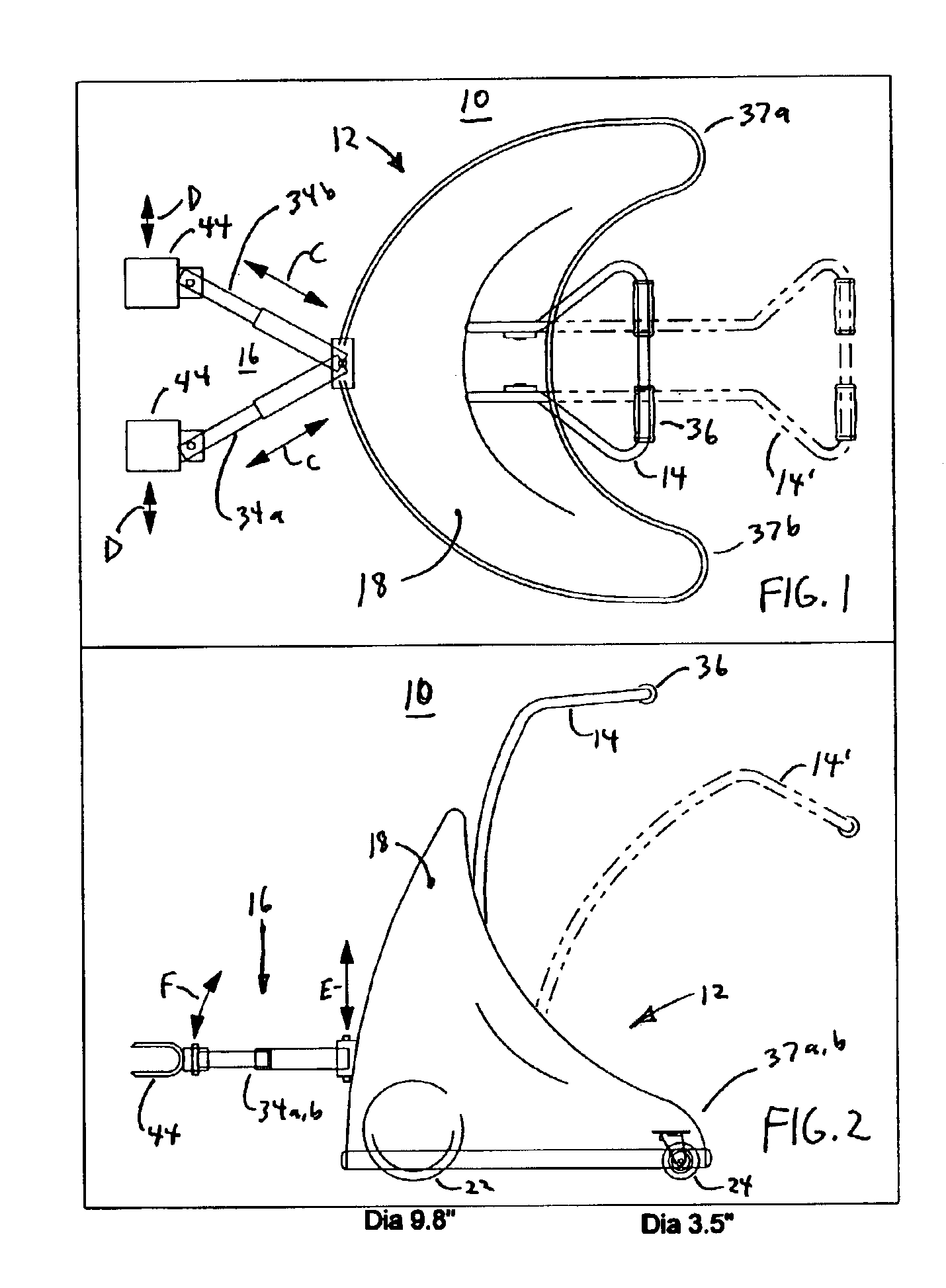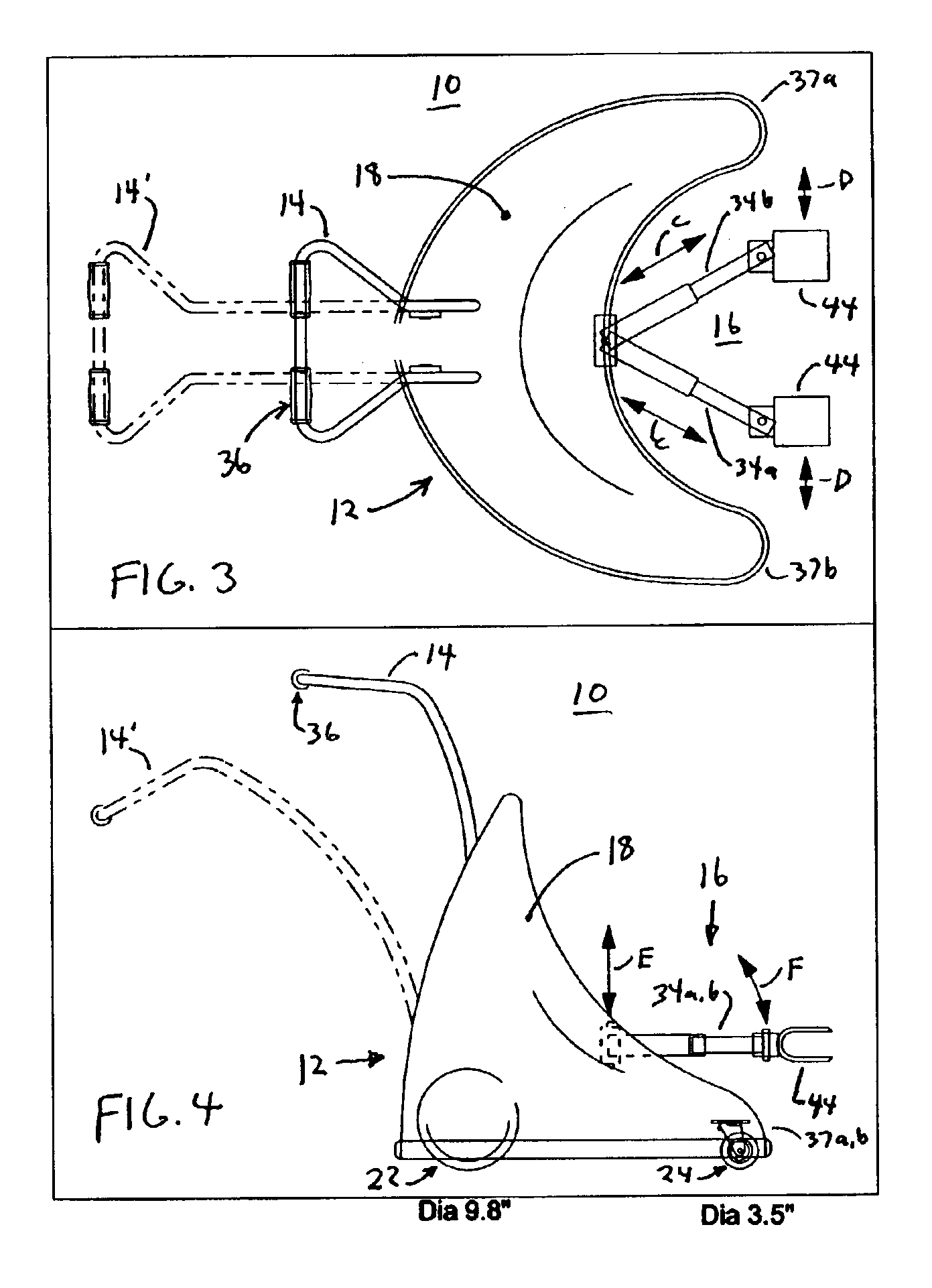Hospital bed power-assist
a technology for moving beds and power-assists, which is applied in the direction of hand carts, nursing beds, transportation and packaging, etc., can solve the problems of affecting the health of patients, affecting the mobility of hospital beds, and affecting the quality of life of patients,
- Summary
- Abstract
- Description
- Claims
- Application Information
AI Technical Summary
Problems solved by technology
Method used
Image
Examples
Embodiment Construction
FIG. 1 shows a top plan view, and FIG. 2 shows a side elevation view, of an electrically powered hospital bed moving machine 10 according to one embodiment of the present invention. Similarly, FIG. 3 shows a top plan view, and FIG. 4 shows a side elevation view, of the hospital bed moving machine 10 according to another embodiment of the present invention. As shown in FIGS. 1-4, the hospital bed moving machine 10 includes a body 12, a handle 14, and a hitch 16. The body 12 comprises a cover 18 and a structure 20. In one embodiment of the invention, the body 12 does not have a cover 18, but simply comprises a structure 20.
FIG. 5 shows a top plan view, and FIG. 6 shows a side elevation view, of one embodiment of the invention with the cover 18 removed. As shown in FIGS. 5 and 6, the cover 18 houses the structure 20, the drive wheel 22, the free turning wheels 24, the motor 26, the motor controls (i.e., drive circuitry) 28, and the power source 30.
As shown in FIGS. 1-6, the body 12 cou...
PUM
 Login to View More
Login to View More Abstract
Description
Claims
Application Information
 Login to View More
Login to View More - R&D
- Intellectual Property
- Life Sciences
- Materials
- Tech Scout
- Unparalleled Data Quality
- Higher Quality Content
- 60% Fewer Hallucinations
Browse by: Latest US Patents, China's latest patents, Technical Efficacy Thesaurus, Application Domain, Technology Topic, Popular Technical Reports.
© 2025 PatSnap. All rights reserved.Legal|Privacy policy|Modern Slavery Act Transparency Statement|Sitemap|About US| Contact US: help@patsnap.com



